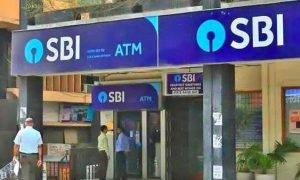Investment in Sovereign Gold Bonds (SGBs) went up sharply during COVID-impacted years as investors looked for safer options amid volatility in equity markets with 2020-21 and 2021-22 accounting for nearly 75 per cent of total sales of the bonds since the inception of the scheme in November 2015.
The next tranche of SGBs is scheduled to open for subscription for five days beginning Monday. The issue price has been fixed at Rs 5,091 per gram of gold. It will be the first issuance of the current fiscal.
Read More:-Canara Bank aims to improve bottom line further with balanced focus on retail, business lending
The government in consultation with the Reserve Bank of India has offered a discount of Rs 50 per gram less than the nominal value to those investors applying online and the payment against the application is made through digital mode.
A total of Rs 38,693 crore (90 tonnes of gold) has been raised through the scheme since its inception in November 2015, as per a RBI data.
During 2021-22 and 2020-21, the two COVID-impacted financial years, investors bought the bonds for an aggregate amount of Rs 29,040 crore or about 75 per cent of the total sales of the SGBs since its launch.
Read More:-Top 10 Biggest Companies In India Lost Nearly Rs 4 Trillion Last Week | Complete List Here
The Reserve Bank issued 10 tranches of SGBs during 2021-22 for an aggregate amount of Rs 12,991 crore (27 tonnes).
During 2020-21, the central bank issued 12 tranches of SGBs for an aggregate amount of Rs 16,049 crores (32.35 tonnes).
A total of Rs 9,652.78 crore (30.98 tonnes) were raised at the end of the fiscal 2019-20 through the scheme in 37 tranches since its inception in November 2015.
The first tranche of SGBs was launched in November 2015. Subsequently, two tranches were floated in January and March 2016.
Read More:-ESIC to cover the entire India under ESI Scheme by year-end
Rishad Manekia, Founder and MD, Kairos Capital, a Mumbai-based SEBI-registered investment advisory firm, said the SGBs can be seen as a substitute for holding physical gold plus it has a yield component. It has the advantage of being government-backed and an easy-to-store option.
“One thing to look out for in these instruments is the lack of liquidity and the lack of diversification. If you hold the bonds till maturity then liquidity is not an issue. However, if you wanted to exit early, your options are much more limited,” he said.
The tenor of the SGBs is for a period of eight years with an option of premature redemption after fifth year.
Deepak Jain, Chief Executive, TaxManager.In said that SGBs are one of the safest modes of investment which not only gives capital appreciation but also gives interest payment along with government guarantee.
Read More:-Bharat Biotech Nasal Covid Vaccine’s Phase 3 Trials Completed
“But if you are looking for aggressive returns then this is not the right investment for you. So as the case may be ? in your investment portfolio ? SGB should not be more than 5 per cent to 8 per cent of the total investments,” he said.
On the taxation of Sovereign Gold Bonds, Kunal Savani, Partner, Cyril Amarchand Mangaldas said the special tax regime provided in the Income-tax Act, 1961 for the taxation of Sovereign Gold Bonds (SGBs), has been designed to encourage and incentivise investors to hold gold in non-physical form for a long period of time.
“Accordingly, only gains arising from the redemption of SGBs after the expiry of the maturity period (i.E. 8 years) have been exempt from tax, while gains arising from premature redemption and secondary transfers have been kept within the tax net,” he said.
Read More:-ITR refund: How to rectify mistakes in your name, account number printed on the refund cheque
The investors are compensated at a fixed rate of 2.50 per cent per annum payable semi-annually on the nominal value.
SGBs are sold through banks, Stock Holding Corporation of India Limited (SHCIL), Clearing Corporation of India Limited (CCIL), designated post offices, National Stock Exchange of India Limited (NSE) and Bombay Stock Exchange Limited (BSE).
The SGB scheme was launched in November 2015 with an objective to reduce the demand for physical gold and shift a part of the domestic savings — used for the purchase of gold — into financial savings.





































